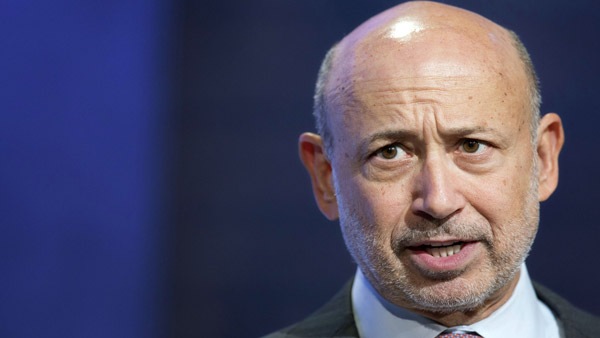
 CEO Lloyd Blankfein of Goldman Sachs. (Photo: AP)
CEO Lloyd Blankfein of Goldman Sachs. (Photo: AP)
The price war that had been raging among mutual funds, then spread into ETFs, has now spilled over into the smart beta ETF space with the second launch of a Goldman Sachs smart beta fund that charges just nine basis points. Only Vanguard charges less, with some smart beta funds costing just six basis points.
In mid-September, Goldman launched an equal-weight U.S. large-cap equity ETF (GSEW), which tracks the Solactive U.S. Large-Cap Equal-Weight Index comprising approximately 500 of the largest U.S. equities. It was the 11th ETF launched by Goldman since September 2015, when it introduced its first ETF, the Goldman Sachs ActiveBeta U.S. Large-Cap Equity ETF (GSLC), charging nine basis points.
"GSEW seeks to help investors looking for a low-cost way to avoid market-cap biases by allocating evenly to the largest U.S. companies, independent of their relative size," said Michael Crinieri, GSAM's global head of ETF strategy, in a statement announcing the launch.
"The days of 'sacred cow' ETFs that can charge a premium fee are ending," says Todd Rosenbluth, director of ETF and mutual fund research at CFRA.
Indeed, less than three months before the latest Goldman launch, Guggenheim Investments slashed the fee on its Guggenheim S&P 500 Equal-Weight ETF (RSP), the first smart beta ETF, from 40 basis points to 20. Guggenheim wanted to get ahead of the Goldman launch, says Rosenbluth.



